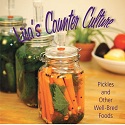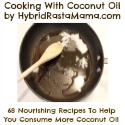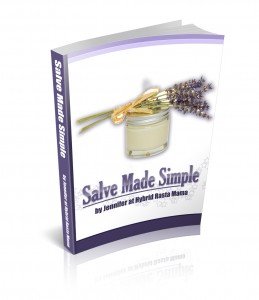GAPS Basics: How to make GAPS yogurt
You may already make yogurt when you come to GAPS or it may be a kitchen activity that sounds overwhelming and complex. In either case GAPS yogurt may be a new process that, while complex at first, will become a very familiar part of your food routine very quickly.
Do you see the beautiful cream line on this raw milk yogurt?
First we should talk about why you should consume yogurt. Fermented milk products have been consumed as long as humans have consumed dairy from domesticated animals. Proper fermentation helps to turn a highly perishable products, fresh sweet milk, into a shelf stable product. The simplest way to do this is to simply allow raw milk to clabber, that is sit out and ferment with it’s own innate bacteria. This is a simple process requiring no preparation but runs the risk of fermenting the wrong bacteria and ending up with something putrid, not tasty. So it was discovered that if you add some of the previously successfully clabbered milk it is more likely to end up tasting the same/good. This gives the preferred bacteria a head start and lets them outgrow the other, less desirable bacteria that may be present. Over time various ways were discovered to make fermenting come out in more predictable and desirable ways. This involve adding something to the milk and controlling it’s environment in different ways. Kefir and yogurt are two of those cultures but there are others. The basic formula is the same, you add microbes of some kind to fresh milk and allow it to proliferate in that milk. This consumes the lactose in the milk and transforms it into a tasty more shelf stable product.
This traditional way of fermenting milk has served humans since before recorded history. Furthermore humans have consumed fermented foods in every section of the planet and our gut depends on the influx of these friendly bacteria on a daily basis in order to maintain health. Yogurt is simply one of those fermented foods, however, there is a challenge if you have a damaged gut. Digesting the lactose in these foods can be difficult for your gut. While some dairy products (like aged cheese) have all of the lactose consumed others (like traditional yogurt) still maintain a significant amount of lactose that can cause discomfort and damage.
The GAPS diet comes from the Specific Carbohydrate Diet (SCD). Elaine Gottschall, who popularized this diet, tested and discovered that at 24 hours nearly all of the lactose has been consumed by the bacteria in yogurt culture. Jordan Rubin discovered that at 30 hours the lactose is completely gone but that means that all of the food for the beneficial bacteria is gone and the colony will quickly collapse and die without any residual food. After GAPS yogurt is fully fermented it still contains the sugar galactose. This is a monosacharide that must be converted in the liver to glucose in order to be used by the body and so shouldn’t be consumed in unlimited quantities, esp by those with health problems. Elaine placed a daily limit at 3 cups of yogurt for adults and 2 cups for children. That seems like a prudent rule to follow for those of us on GAPS as well.
So for GAPS yogurt the recommendation is to ferment it for 24 to 29 hours. This will eliminate enough of the lactose to prevent digestive problems and yet leave a trace behind for keeping the colony of beneficial bacteria alive until it is consumed. In just a cup of properly prepared GAPS Yoghurt (236ml) you’ll get 708 Billion beneficial bacteria. (source). That is a lot of beneficial bacteria. Bio-Kult Probiotic![]() , for example, has just 2 billion cfu (cell forming units).
, for example, has just 2 billion cfu (cell forming units).
Since it takes 24-29 hours to make this yogurt it may be tempting to make up a whole bunch at once and then dole it out over time. This isn’t such a great idea however. The beneficial bacteria in yogurt don’t last very long and after 2 weeks have nearly all died. You can only expect GAPS yogurt to last 3-4 weeks in the fridge at the most but past 2 weeks it isn’t really a probiotic food, just a lactose free dairy food. (source) There is some speculation that there is benefit from ingesting dead bacteria but that hasn’t been proven at this point. It is known that dead microbes are the main source of bulk in the stool and assist elimination so if nothing else dead yogurt should help keep you more regular. Of course dairy protein can be constipating so perhaps it is just be a wash.
Ok so how is this wonderful yogurt made? you ask.
To make yogurt you need:
- Milk, either raw or pasteurized from cows, goats or sheep.
- A way to heat the milk to 180 degrees and a thermometer to determine the temperature of the milk.
- Some sort of culture to get it started in the right direction.
- A way to keep it at the right temperature for at least 24 hours.
I’l talk about each of these individually.
Selecting milk for fermenting
The milk that you use can be raw or pasteurized. For this process we are only talking about actual milk. Making yogurt from nut milks or the like is a somewhat different process and needs it’s own post. If you have read the GAPS book you know that the most nutritious milk will be from animals eating their species appropriate food. For cows and sheep this means exclusively grassfed. Goats are browsers and can’t be exclusively grassfed although in the right conditions they can do well without grains. When trying to decide what kind of milk to get, raw is always the best choice if you can find it. The next best milk to look for is grassfed, pasteurized but not homogenized. This milk will have cream floating on the top. If you can’t get non-homogonized milk look for skim milk without added milk solids and heavy cream and combine them to make your own non-homogonized whole milk. Do not ever use ultra pasteurized milk. This is also called UHT milk. This milk will not make yogurt and is not healthy for anyone to consume even if it is organic. If you can’t find grassfed milk then choose organic milk. These cows have been fed grains and will not produce as nutritious a milk as grassfed cows but at least the milk won’t have rGBH in it or traces of pesticides or antibiotics. If you truly can’t afford any of these options then conventional milk will also make GAPS yogurt. Just be certain that it is not UHT milk.
Heating your milk
If your milk it is raw you need to make a choice. Do you want to leave it raw or pasteurize it. Some (like my family) like leaving it raw to get the benefits of raw milk in a lactose free, probiotic food. This tends to result in a thinner yogurt that sometimes ferments wrong because the innate bacteria in the milk out competes the yogurt culture. Others prefer the thicker quality and predictability of yogurt made from cooked milk. They also reason that they don’t want anything competing with the proven beneficial strains of the yogurt culture and so they want to start with a clean slate by killing off the bacteria found in raw milk. They know that the milk they are getting from their farmer is of superior quality to what is available in the grocery store and so it still is the best choice for consumption even if it will no longer be raw. Both arguments have merit and it will be up to you to decide which method you will pursue for your raw milk. If you choose to cook the milk proceed as for pasteurized milk.
About pasteurized milk there is no debate. It is necessary to heat all previously pasteurized milk to 180 before making it into yogurt. This untangles the proteins and destroys any microbes that may have contaminated it since it was first processed. I do this heating on the stove top in a stainless steel pan. You want the pan to be somewhat bigger than what will just hold the milk that you are heating since it will expand somewhat when heated. Do not boil the milk. You just want to heat it to 180 and then let it cool. You need a thermometer to keep track of the temperature if you are following this method. I use one like this Pocket Thermometer![]() . Do not let it go over 180. It works best to heat it on medium on the stove. This takes longer but you are far less likely to overshoot your goal and boil the milk. Try to occupy yourself in the kitchen while doing this or you will discover that an unwatched pot does indeed boil when you least expect it. After heating it to 180 you then need to cool the milk to 110 or so. You can do this by just leaving it in the pot for a while or you can put it into a container that you set in a sink full of ice or cool water. I have been known to pour it into the qt jars I intend to incubate it in and set them into ice water to cool it off faster. Again keep track or you may end up overshooting your goal. If you are planning to leave your milk raw you can gently heat it to 110 or follow my lazy method and just leave it cold and allow the incubation method to bring it up to temperature.
. Do not let it go over 180. It works best to heat it on medium on the stove. This takes longer but you are far less likely to overshoot your goal and boil the milk. Try to occupy yourself in the kitchen while doing this or you will discover that an unwatched pot does indeed boil when you least expect it. After heating it to 180 you then need to cool the milk to 110 or so. You can do this by just leaving it in the pot for a while or you can put it into a container that you set in a sink full of ice or cool water. I have been known to pour it into the qt jars I intend to incubate it in and set them into ice water to cool it off faster. Again keep track or you may end up overshooting your goal. If you are planning to leave your milk raw you can gently heat it to 110 or follow my lazy method and just leave it cold and allow the incubation method to bring it up to temperature.
Selecting a culture
There are many different approaches to this as well. My family uses Yogurt Starter 2 from Custom Probiotics. This has 5 strains of beneficial bacteria and no fillers. One jar lasted us about 18 months making 1-2 gallons of yogurt a week. We did find that different sources of milk needed more or less starter to come out the best but that wasn’t really a hardship. We also have used 11-strain probiotic powder also from Custom Probiotics. This doesn’t have as good a taste but these particular strains are very beneficial for people who have difficulties with oxalates like myself and one daughter. Another common yogurt starter is made by Yogourmet Yogourmet Freeze Dried Yogurt Starter![]() . This is available at many health food stores and some mainstream grocery stores as well. It does have some ingredients not allowed on GAPS/SCD however it was the opinion of Elaine Gottschall that the small amount of illegal ingredients would be consumed in the fermenting process and not cause a problem. This was the starter that I used most of the time while my family was following SCD in 2006. One more even more widely available source of starter is to simply purchase a plain yogurt without additives. It is important to look at the ingredients list and avoid yogurts with added flavors, sweeteners, starch or pectin. Also make sure that it says somewhere on the packaging that it contains live cultures.
. This is available at many health food stores and some mainstream grocery stores as well. It does have some ingredients not allowed on GAPS/SCD however it was the opinion of Elaine Gottschall that the small amount of illegal ingredients would be consumed in the fermenting process and not cause a problem. This was the starter that I used most of the time while my family was following SCD in 2006. One more even more widely available source of starter is to simply purchase a plain yogurt without additives. It is important to look at the ingredients list and avoid yogurts with added flavors, sweeteners, starch or pectin. Also make sure that it says somewhere on the packaging that it contains live cultures.
What about just using the yogurt you have already made as a starter? Unlike kefir, yogurt bacteria aren’t robust and are susceptible to becoming contaminated by other bacteria. If you are making raw milk yogurt you can use some of the previously made yogurt for one more generation. That is that if you use a starter to make yogurt, you can safely make yogurt using the resulting yogurt as a starter once. You must do this within 2 weeks of making the original yogurt or it will be unlikely that you will have enough living culture to start the next batch. If you are making yogurt with pasteurized milk you can safely culture for another 3 generations. That is after making the original yogurt you can then use that yogurt (within 2 weeks) to make another batch, and use that resulting yogurt to make another batch and then one more time use the resulting yogurt to make a batch. It is possible that these yogurts will go on for more generations but the more times you do it the greater the chance that your culture will be corrupted and you will end up with a putrid result instead of yogurt. I find that my raw milk is far too expensive a commodity and the fact that it takes 24 hours to make one batch is too much time and effort to be risking that it won’t come out good nearly all of the time. I personally use a fresh starter each and every time to minimize the risk.
Incubating the Yogurt
This is probably the trickiest part of making yogurt. You must find a way to keep the milk warmer than 95 and cooler than 115 for 24 hours. This is a rather narrow range of temperatures. If it gets too hot, even for a minute, the culture will be killed and your yogurt will be ruined. If it gets too cold it will slow down the fermentation or even stop it and you will be left with a product that still contains too much lactose for someone on GAPS. Traditionally yogurt is only cultured for 4-6 hours and so methods that involve insulating the warm milk are often employed for this type of yogurt. Many people put it into a thermos or wrap it in a wool blanket. There is also a crock pot method that is very popular right now online. Each of these methods will only keep the milk warm for 4-8 hours and will be insufficient for our purposes. In order to keep the yogurt warm enough for 24 hours you will need an outside source of heat.
I have hesitated to write this blog post in part because I feel like I am cheating when I make yogurt. I use an Excalibur 9 Tray Dehydrator![]() to make my yogurt. It is extremely simple to make yogurt in this machine. It has a temperature setting and enough room for 9 half gallon jars so I could easily make 4.5 gallons of yogurt at one time if I wanted to.
to make my yogurt. It is extremely simple to make yogurt in this machine. It has a temperature setting and enough room for 9 half gallon jars so I could easily make 4.5 gallons of yogurt at one time if I wanted to.
I also have used jelly jars like these ![]() or these
or these ![]() to ferment yogurt in individual serving sizes. My children love having their own individual servings of yogurt and these are very easy to pack for eating away from home.
to ferment yogurt in individual serving sizes. My children love having their own individual servings of yogurt and these are very easy to pack for eating away from home.
I have found that when fermenting raw yogurt, setting the Excalibur at the recommended 115 is too hot and ruins the yogurt. However, a setting of 95 turns out perfect yogurt every time. Since I rarely make yogurt with pasteurized milk I am not sure if that kind of milk does better at a slightly higher temperature. Perhaps someone can let us know in the comments if you have experience with making yogurt from pasteurized milk in this dehydrator and what temperature you use. With this machine I simply mix the culture into my cold milk and place it into the dehydrator set to 95 degrees . 25 hours later I take out finished yogurt and put it into the fridge. I give it an extra hour because I start with cold milk and want to give it time to get up to temperature.
I use my dehydrator for lots of things in addition to making yogurt and if you could possibly afford one I highly recommend that you invest in it. I purchased one without a timer and haven’t ever regretted that choice. I will have to do another blog post about all of the things that I have made in this machine.
If this dehydrator is not in your budget at this time there are other options. Yogurt makers are one option but they tend to have a problem. They get too hot when you run them for 24 hours straight. When I did SCD I used a Salton 1-Quart Yogurt Maker![]() . It is my understanding that this is no longer being manufactured. To make it work without getting too hot I used a 1 qt canning jar in it and left the lid off. It was important with this kind of a maker that my milk was heated to 110 when it put it in or it spoiled because it didn’t come up to temp fast enough (I assume). I suspect that the Euro Cuisine 2qt Yogurt Maker
. It is my understanding that this is no longer being manufactured. To make it work without getting too hot I used a 1 qt canning jar in it and left the lid off. It was important with this kind of a maker that my milk was heated to 110 when it put it in or it spoiled because it didn’t come up to temp fast enough (I assume). I suspect that the Euro Cuisine 2qt Yogurt Maker ![]() would work in a similar fashion since it appears to be the same basic design but I have not tried it. If you already own a yogurt maker and are wondering if it will work to make GAPS yogurt I advise that you do a test run with just water in it and then take the temperature at the end of a full 24 hours. If it is above 115 it will kill the culture and ruin your yogurt. Some people have installed dimmer switches into the cord of yogurt makers in order to lower the temperature and have a successful result. You may also find as I did that removing a lid or some other modification will be enough to get the desired temperature range.
would work in a similar fashion since it appears to be the same basic design but I have not tried it. If you already own a yogurt maker and are wondering if it will work to make GAPS yogurt I advise that you do a test run with just water in it and then take the temperature at the end of a full 24 hours. If it is above 115 it will kill the culture and ruin your yogurt. Some people have installed dimmer switches into the cord of yogurt makers in order to lower the temperature and have a successful result. You may also find as I did that removing a lid or some other modification will be enough to get the desired temperature range.
Another option is to replace the light bulb in your oven with a 60 watt light bulb and leave the light on and the yogurt in your oven for 24 hours. This should keep the interior the correct temperature. Some use a clip on lamp with a 60 watt light bulb that they run into the oven for this purpose. One obvious drawback to this arrangement is that you can’t use your oven for 24 hours. One advantage is that this method will accommodate a variety of jar sizes, like the dehydrator. Again, I recommend that you do a practice run with water before trying it with expensive raw milk to be sure that you have all of the details worked out. Some need to prop their oven door open to keep it from getting too hot with this method. Also think through how you will prevent someone from turning on your oven while your yogurt is in there incubating. There have been many stories told of people whose yogurt was cooked when they or another member of their household began to preheat the oven without looking inside of it first.
Some other do it yourself methods include using a cooler filled with hot water, wrapping the jars of milk in a heating pad, rigging up a foil lined box containing a lamp with a 60 watt light bulb integrated into it, and turning on and off a crock pot to maintain the appropriate temperature. Each of these methods will take some trial and error to get your liquid to maintain the appropriate temperature for the entire 24 hours but each has been used by resourceful people who want yogurt and don’t have the funds for an expensive apparatus to make it. I have no doubt that Google will reveal even more methods than I have mentioned here. I will recommend googling both SCD yogurt and GAPS yogurt to find the most results.
Once you have made your yogurt you may look at it and think that it doesn’t look very thick. It will come out the best if you put it into the refrigerator right away without shaking or stirring and allow it to chill for at least 6 hours before digging into it. This allows it to set up and get thicker. Raw milk and goats milk yogurts will be thinner than pasteurized cows milk but should still be thicker than unfermented milk. Different culture starters will also make for a thinner or thicker result. Do not be tempted to add powdered milk to your yogurt to make it thicker. Powdered milk has damaged proteins and is not healthy for anyone to consume. It also will raise the lactose level of the product and the result at the end of 24 hours will be yogurt with quite a bit of lactose remaining. If you really want a thicker product you can add gelatin when you add the yogurt culture. I have used Bernard Jensen Products - 100% Pure Gelatin![]() . It may take some trial and error to find the thickness that you like best. You can also drip your finished yogurt through some cheesecloth to remove the whey and achieve a thicker product more like greek yogurt. Use your own judgement for how thick you want the results to be.
. It may take some trial and error to find the thickness that you like best. You can also drip your finished yogurt through some cheesecloth to remove the whey and achieve a thicker product more like greek yogurt. Use your own judgement for how thick you want the results to be.
How to make GAPS Yogurt
1. (optional) Heat 1 qt of milk to 180
2. (optional) Cool milk to 110 or warm raw milk to 110
3. Mix in 1/4 cup of yogurt or starter culture (use package directions to know how much to use)
4. Place in dehydrator, yogurt maker, or other incubator for 24 to 29 hours
5. Refrigerate for at least 6 hours.
6. Enjoy, add flavors and sweeteners at this point if desired.
Once you have figured out how to make GAPS yogurt the process is fairly simple and straight forward. It is just collecting the culture and figuring out how to keep it warm that can be complicated. Once those questions are resolved you will find that it takes very little of your food prep time each week to make fresh yogurt.
Have you been making GAPS yogurt? Do you still have any questions about how to do it? Do you have an incubation method that I haven’t covered? What is your favorite starter? Please share the answers to these questions in the comments section for this post.
Please read these posts to learn what changes I have made in my yogurt fermenting
The Great Yogurt Experiment after One Week
The Great Yogurt Experiment Conclusion




55 Comments
Trackbacks/Pingbacks
- Fermenting 101: Yogurt, Why Make It Yourself. « Pickle Me Too - [...] I know I’ve written about yogurt a few times in the past but I wanted to write a series …
- Yummy Cheeseburger Soup | Loving Our Guts - [...] cups GAPS kefir or yogurt (if not on GAPS any plain yogurt or kefir is [...]
- GAPS Lunch Box Lunches | Loving Our Guts - [...] Yogurt or kefir plain or blended with fruit and/or honey [...]


















Hi Was wondering if you are slowly getting better on the Gaps? I have been on it for a few months and don’t notice much of a difference. Just wondered also if you have done I.V. heavy metal chelation?
Thanks for all of your posts they are so good!!
Kelly
Hi Kelly,
I am getting better but it is not linear and just GAPS is not enough for me or for my children. NCM says that GAPS alone will be enough for about 80% of people to heal but I’m in that lucky 20% who need more.
I have not done any chelation.
Patty
Warm Hello Patty
i am struggling on the gaps a bit
if i may ask what Is? the 20 percent more?
maybe it will be helpful
I LOVE YOUR WEBSITE

just found it and going to look around now
warmly
tee
Patty, I make mine similar to yours with organic milk and the Yogourmet starter and the dehydrator. One question I’ve always had is if you cover your jars when you put them in the dehydrator? I do, loosely. I’ve just never seen it stated in anyone’s instructions. Thanks!
Yes I always cover them tightly. Good question!
Hello. I tried using the oven method with 60 watt bulb. My thermometer thought it was the correct temperature at first, but by the time the 24 hours was up, it was reading 118 F. I dont know how accurate the thermometer is but I am thinking that it was too hot. The final product is very sour (I used low heat pasteurized goat milk and a local goat yogurt as starter). Also, the final product has not separated in the way illustrated in your picture above. It is slightly thicker than milk, but not much. How do I know when I ‘get it right’? Do I have yogurt that is just very sour or milk with some bad bacteria?
That is why I say to always be sure to do a test run with water first for the full 24 hours. You are probably fine. 118 is the temp where the culture begins to die so it may have survived or may have died after it cultured the milk fully. Since you used Goats milk it is unlikely to have a cream line like my raw cows milk has. (Although sometimes it does). Did you heat it to 180 and then cool it before culturing it? (this is a necessary step for your kind of milk). If you did then it is very unlikely that you cultured anything but what you added to the milk. 24 hour yogurt is very sour and goats milk yogurt tends to be thinner than cows milk yogurt. Let it sit in the fridge for at least 6 hours before disturbing it and see how thick it gets. If it goes bad it generally has a grainy stringy texture and lots of whey floating on top and a thick curd at the bottom (in my experience). It sounds like yours cultured the right thing but may have killed off the culture right there at the end. You can experiment with using a pencil to keep the door open a crack and see if that keeps the temp from going too high.
Thanks for the info. I did not heat it to 180, I figured it had already been low heat pasteurized so why bother. I was confused by what you had written about this step above and why or why not one might do it and under what circumstances. Why is that necessary if using pasteurized milk? Sounds like it is not needed with raw milk (of course, then it would not be raw eh)?
I did put it in the fridge before testing it. It did not seem stringy but did have a bit of clumpiness to it.
Pasteurized milk always, always must be heated to 180 and then cooled before making yogurt from it. Milk that has been pasteurized may have been contaminated after it was made and so it needs to be made sterile again by heating to 180. Also this helps to untangle the proteins that were tangled in the original processing. This is a universal instruction in making yogurt and not heating raw milk is a deviation from the norm.
Patty
Why would low heat pasteurized locally produced milk be more likely to be contaminated after pasteurization than raw milk? My mind is having a hard time with this… Again thank you for your help
Chris
Raw milk contains beneficial bacteria that often can overwhelm any pathogenic bacteria preventing illness. (Green Pastures in CA has done experiments where they purposefully contaminated milk and then tested it a couple of days later and could find no traces of the contamination). Also raw milk is often treated more carefully than pasteurized milk, esp before bottling since it is assumed that pasteurization will eliminate any pathogens it has been exposed to. I have heard this from dairy farmers themselves, that it was their experience that many farmers weren’t very careful about contamination of the milk because they figured it would just be cleaned up afterward. Of course proper pasteurization will kill off any bacteria but also this doesn’t address the issue of untangling the proteins that happens when you heat the milk before making it into yogurt. The bottom line is that it will make a product you are happier with if you heat it and it is far less likely to culture the wrong thing.
Dear Patty,
I am so grateful for your blog, it has helped me a lot.
I made pasteurized goats milk in my Eurocuisine
from your instructions and it was perfect. Then I
found some frozen coconut milk with no additives,
and I thought to attempt coconut yogurt. It was
due to come out at ten pm last night. I totally
forgot about it, and woke up at 5:30, thinking,
oh no, YOGURT…I’ve just removed it. So it was
in process for 32 hours. I am assuming the
probiotics are worthless now, is it edible? Should
I toss it, or can it be eaten just as food even
though it is way over fermentation time.
Trying not to beat myself up over this, I was
so looking forward to trying this and the
cococut milk was not cheap. Thanks for your help.
Hilary
Non-dairy yogurt is different than dairy yogurt. It needs sugar of some sort added to feed the culture and doesn’t need to go for nearly as long. If the coconut yogurt you made tastes ok then it is edible but it is unlikely to have much of any beneficial bacteria at this point.
I use an Excalibur and heat the milk to 180 degrees then cool to 115 before adding the culture. I too found that the 115 setting was much too high, and have only had success with the 95 degree setting. I hope this helps someone, as it took a whole lot of wasted batches before I figured it out.
I have just been using my Excaliber (which I have had for years, but never used for yogurt) for a day because the culture I am using requires a more exact temperature than the Yogourmet I was using before. I used my probe thermometer to check the temperature inside the unit and I have found that my unit runs at least about 6 or 7 degrees above the temp it is set on so this is why you must set the temperature dial low.
Me!! Thanks for posting. I thought for sure I was just inadequate at making yogurt. I am even doing have raw cream and half raw milk this round in hopes of a better outcome. So glad I read the blog and comments first. Setting my dehydrator to 95. 😉
GAPS isn’t working as well as I’d hoped for us as well, despite strict adherance. Do you blog about what else your fam has done for healing?
Yes go to the cherries on top link at the top of each page and you can read about the other approaches we are using to find healing.
Thanks for your very easy explanation of yogurt making. I’m on my 4th batch now, thanks to your clear instructions. I wound up buying one of the yogurt makers that makes a larger batch of yogurt (versus the ones with all the small jars). I have been happy with it and replaced the plastic container that was supposed to hold the yogurt with a glass one. Although I am using a 1 quart glass jar rather than the 2 quarts the yogurt maker can handle. Because the 2 quart mason style jar was too tall. I’m still on the lookout for a larger glass jar that will fit. Your post has gotten me SO interested in purchasing a dehydrator, but I’m concerned about the plastics leaching chemicals into the foods. Have you found any safety data on that. I was thinking that maybe the low heat that the foods dehydrate at aren’t enough to cause leaching? Any thoughts on this topic? We take such care to use all these glass storage methods, seems kind of silly then to expose food to heat and plastic. But I’m hoping that maybe I’m overthinking it.
I have not carefully studied the issue of the plastics in the dehydrator leaching. I know that is more likely to happen in a high fat food which most dehydrated foods are not. There are stainless steel dehydrators but they were far out of my price range.
FYI I have recently made a very important change in how I make yogurt. I’ll be publishing my results of my testing soon and my own plan going forward with making yogurt for my family so stay tuned! I’ll be updating this post once I get it all put together.
Thanks. Interested in seeing the yogurt updates! Speaking of which, it’s 11pm and I’m about ready to start my first batch of oopsie rolls with my recently strained batch of cream cheese.
Hi Patty,
Thanks for the great instruction on making yogurt! Are you still suing the dehydrator to make yogurt and are you still making yogurt as you were before or was the change you tried better?
wyatt
Hi Wyatt,
I still make yogurt in my dehydrator but I now use a pickl-it jar with the air lock in place when I make my yogurt.
Patty
I just bought the Excalibur and made my first batch of yogurt. I had read this blog post several weeks ago when I was making yogurt for the first time, but hadn’t recalled to set the Excalibur to 95. I have been using a Yogourmet yogurt maker, which was working well on it’s own and even better once I purchased a dimmer switched and turned the temperature down. Without the dimmer switch, the yogurt was running pretty close to 115 degrees when I checked the initial batches throughout the 24 hour period. The yogurt is fine and edible and makes more yogurt when it is running (as close as I can tell with the thermometer that came with the Yogourmet) around 115 degrees. And I’ve cultured yogurt from those batches just fine. However, I found that the yogurt is tastier when I turn down the dimmer switch a bit and the temperature of the yogurt is around 95. I bought the Excalibur because as we have been able to increase our yogurt intake I’ve been needing to make yogurt every other day or even every single day if I’ve needed to drip a batch to get the whey and/or thicker “cream cheese” from the yogurt. I bought the Excalibur for it’s many uses, including saving time with making bigger yogurt batches. I did the first yogurt batch in the Excalibur and set it to 105, not really realizing that the internal temperature of the yogurt would potentially be higher than that. So now my first batch of yogurt in it wound up being back up around 115 degrees, edible and still live, but not as tasty as the lower temperature. When I make the next batch, I’m going to try your suggestion and set the Excalibur to 95 degrees, as it seems that the yogurt is running about 10 degrees above where it’s set, which would give me that 105 degree yogurt that I prefer. Also, I don’t know if testing water for temperature would be accurate for comparison purposes to yogurt. Yogurt is thicker and would potentially hold heat differently than water.
I realize that milk and water aren’t identical and may hold heat slightly differently but the testing with water is so that if your method is going to produce 125 degree water then it is unlikely to keep under 115 for milk and it is best to know that before you waste expensive raw milk fine tuning your method for incubating yogurt. I doubt that they are more than a degree or two different since milk is also mostly water.
We like ro eat our yogurt thick. If I were to filter it (I’ve used brown paper coffee filters in the past when I have wanted to make “cream cheese” or use the whey for fermenting) at what point do I do this? at the 25 hour mark? Do I load it into the paper filter and then set it in the fridge to drip and cool at the same time?
Good question! I have only ever done that after I had chilled it. I know it won’t set up as well if you disturb it before it is chilled but I don’t know if that will impact it for this purpose or not. Go ahead and give it a try and see what you get.
If you don’t have a dehydrator, or want to save electricity (=natural resources), I have had great yogurt making success with a simple cooler box.
Make yogurt as you normally would, but stick it in an empty cooler instead of a dehydrator, and add a couple of jars of very warm water.
Good luck, everyone!
FYI. To make GAPS yogurt you will have to change the warm water bottles a few times in that 24 hours in most coolers to keep the temp of the milk above 95 the whole time.
Hi Patty,
Thank you for this wonderful tutorial! I am waiting for my Excalibur dehydrator to arrive and planning to make raw goat yogurt. We’ve been on GAPS intro for 6 weeks now, and I would like to start introducing dairy. I’d like to use the 11-strain probiotic powder as the starter. Do you remember how much you use? On the Custom Probiotics page for the yogurt starter product, it suggests 80 billion cfu’s per 2 quarts or 1 gallon of yogurt. This works out to be a little over 0.3 g of the 11-strain, or 3 child scoops. Does this sound right? Thanks for your help.
I usually use 2 child scoops per 2 qts of yogurt of the yogurt starter. That seems to be just right for us. We have found that different milk sources need us to adjust the starter amount used so be ready to play around with it a bit to get it just perfect for your situation. I have made yogurt with the 11 strain but it has been over a year and I simply can’t remember exactly how much I used.
Thanks for your help, Patty. My Excalibur is here (I’m in love!) and will get my raw milk tomorrow. Hopefully I’ll get to make some yogurt then.
Help….. I just overheated my raw milk to 220 degrees….. instead of 110. What negative effects have I created?? Just texture - or changed the enzymes ??
You have made it no longer raw but it is still fine to make yogurt from. The result will be a bit thicker than if you left it raw but otherwise the same. Just be sure to let it cool before you add your culture or you will kill that off too.
Your yogurt instructions are the most thorough I have read. Between your post and the comment section, I answers to all the questions I have had about heating the milk, and the use of raw milk. Thank you so much for taking the time to be so thorough in your explanations.
I love excalibur, but for now I am without one, and have been successfully using a heating pad and towel wrap.
Patty,
Wish I would have found your site before making this batch of yogurt with a $ 14.00 gallon of raw milk and $6 worth of yogurt starter, (this is round 2). The top of the yogurt after 24 hours is watery and the bottom is yogurty looking but pretty sure it is ruined. Temperature swings from 100 to 120 of the course of time. I used a PID control and a crockpot but did not use a water bath. I believe I am now ready for the dehydrator and your ‘pickle it jars’ if you think that is the best thing going. I have spent a lot of money and time on this - eventually I’ll have get it right. I have a gall bladder issue too along with colitis and am going try the remedy you show on your site as well.
wyatt
Unfortunately if it gets above 118 the culture will be killed and you will have dead yogurt. I’m sorry. I know how upsetting it is to have that happen.
I’m sorry. I know how upsetting it is to have that happen.
Patty
I bout the Bulgarian yogurt from Cultures for Health and made the Mother, then went to make a quart of GAPS yogurt. It was set and ready at 8 hours, and I let it go…I peaked in at 10 hours and it was curdled and separated. Do some cultures not allow a 24 hour ferment as they use all the lactose and then die? Any ideas on what happened, and would you expect this to happen or not? Thanks in advance. (it was in my Ex Dehydrator)
I’m sorry I haven’t heard of that happening before. That must have been disappointing! I haven’t heard of anything culturing that quickly really at all. That would be extremely fast. Even when I have let yogurt go way too long it hasn’t ever done that. And when yogurt cultures die the yogurt is still edible and tastes like yogurt just milder. It doesn’t curdle when the culture dies, it just gets moldy eventually.
Does the same hold true for fermenting kefir, that it should not be done longer than 29 hours (at room temp of 68-72), to keep a trace of lactose in it to keep the beneficial bacteria alive until consumption?
Also does the same hold true for kefir that it still contains galactose and thus should be limited to 3 cups or less for adults per day? (Not that I know how I could consume more than that per day anyway).
Thank you!
Hi Gretchen,
Kefir is different. It ferments at different rates depending on how warm it is, your ratio of grains to milk and even how active those grains are. It hasn’t ever been studied to know when all the lactose is gone. Most people on GAPS do a primary ferment of 24-48 hours with the grains in the jar and then a secondary ferment of another 24-48 hours without grains in the jar to be sure the lactose is gone. I have not read either way about galactose in the finished kefir so I’m not sure about that either. It would be prudent to not go overboard with it I think.
Is it possible to make GAPS yogurt from nut milk? If so, do you know where I could find a recipe?!
Yes it is. I know that the difference is that you need to ferment it a shorter time and you need to add some honey to feed the bacteria that ferment it. Here is a recipe from GAPS Diet Journey http://gapsdietjourney.com/2013/04/coconut-yogurt-thick-creamy-delicious/
Do you know when you can introduce cococnut yogurt on gaps diet. I am on intro and starting stage 1 - dairy does not agree with me at this point as my gut is not good (I did fine for a good while on scd dairy yogurt but alas it gives me issues now). Can i introduce coconut yogurt early on in gaps or do I wait another few weeks?
You will need to wait till you can introduce coconut milk which I think is a full GAPS food. Have you done the dairy introduction? You may find that you tolerate it better than you expected if you start with the whey and ghee.
I just found out about Maple Hill Creamery 100% grass fed organic yogurt and emailed to inquire how long they ferment it, and it is 24 hours! So this might be a possible GAPS option for people who don’t want to or are unable to make their own GAPS yogurt. Just wanted to pass the good word along. (:
I followed directions from a GAPS diet book to make the yogurt. I had put a half gallon of raw milk in and started to add the culture. The directions said add 1 tablespoon of culture per cup of milk. Completely different instructions than the box indicated and it seemed very wrong to me. I wound up dumping most of my milk as I had already added some of the starter. So very angry right now. Do you have any idea how much yogurmet culture I should have added? Should I have followed the box?
Yes always follow the instructions on the yogurt culture that you purchases as far as how much to use.
Love all the wonderful information. I have tried to make the yogurt with raw milk several times and I have been unsuccessful. Very expensive mistakes. I purchased the culture from the link available here and followed the directions on the bottle. Not so good. I verified the amount you personally use since I bought the same culture and still it was gross. Never been a fan of yogurt but this tastes spoiled. Any advice?
My advice if you don’t care for it is to pasteurize the milk before making yogurt. THere is a chance that there is some sort of pathogenic bacteria in low levels in the raw milk that you are getting and you are culturing that instead. Also raw milk yogurt doesn’t have the same texture as pasteurized milk yogurt. It is much thinner.
I overheated the milk the other day to 220. I didn’t want to dump it so I finished making it. Does it have any nutrition left in it or should I throw it away?
Getting it that hot won’t destroy any more nutrients than heating to a lower temp. It is still quite nutritious.
I know it’s been a year since this comment, but is Maple Hills organic yogurt (fermented for 24 hours) acceptable on the GAPs diet?? It is accessible to me and would be a God send as I learn or travel. Thanks!
Thank you for this article on 24 hour yogurt! Its wonderfully informative. I ordered the 11 strain probiotic culture and will make my first batch soon. My question is … how much “11 strain probiotic cullture” do I need to make a quart of raw milk yogurt? Thank you for all you have offered here.
The culture comes with a scoop. We usually use 1/2 of the big scoop for 2 qts of yogurt but you can play around with the amount and see how it tastes best to you. Generally 1/2-1 scoop per 2 qts is what is suggested.